De fobias y dinosaurios [Esp/Eng]

Mis amigos más cercanos y mi familia saben que los miércoles son para mí días especiales, días difíciles en los que debo dejarlos en un plano secundario, pues debo concentrarme completamente en mi trabajo. Los miércoles, como ayer, son mis días de consulta, lo que quiere decir que sé cuándo llego al hospital pero no sé cuándo podré salir. Mis consultas son extensas debido al seguimiento que les debo a mis pequeños pacientes, los casos nuevos y la necesidad de contar con tiempo para ayudar a los padres con conceptos que deben comprender, y aclararles preocupaciones que hasta para mí son difíciles de explicar.
Y justo ayer, el universo me puso a mano un caso que me remontó inmediatamente a un tema que por estos días revolotea en esta comunidad y del que todavía no les había comentado: las fobias.
Los miércoles, por tratarse de días extenuantes, siempre voy con ropa cómoda, y en esta ocasión vestí un simple conjunto decorado con montones de pequeños dinosaurios de colores. Huelga decir que adoro ese conjunto, pero sucedió lo inesperado: mi cuarto pacientito, apenas me vio, comenzó a llorar descompasadamente. Les digo que no había modo de consolar su llanto. Llegué a evaluar la posibilidad de que tuviera un dolor como una cefalea intensa o una otalgia, pero mi sorpresa fue mayor cuando la madre pudo adivinar que el pequeño estaba sumamente temeroso de uno de los dinosaurios dibujados en mi conjunto de guardia. Terminé esa consulta con mi bata blanca abotonada para que no pudiera ver los dibujos que tanto le asustaban.
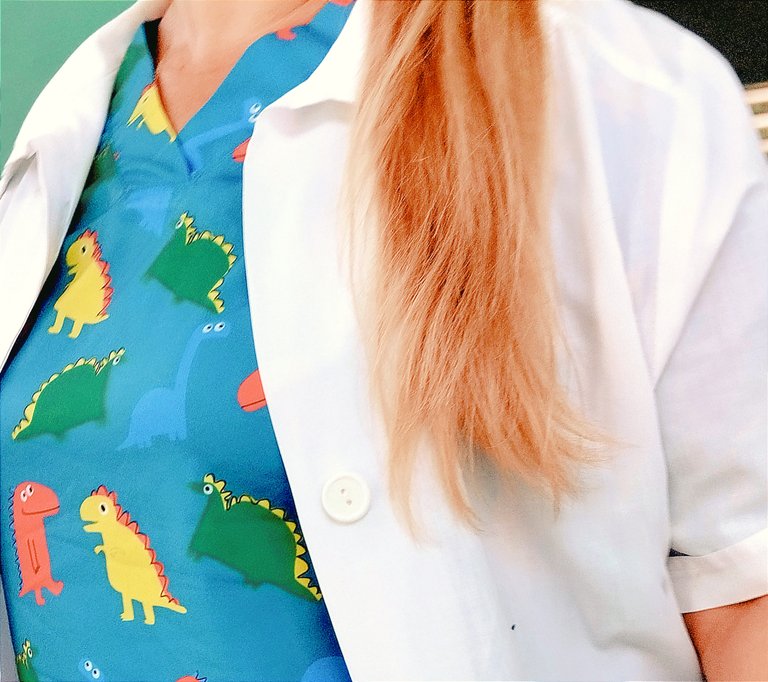
En mi consulta es muy común que los padres lleguen con caras de preocupación y me confiesen pánicos irracionales que poseen sus pequeños, y entonces, como neuróloga, lo primero que hago es buscar problemas orgánicos, y más que eso, guiar a las familias para que comprendan cómo el cerebro de un niño procesa el miedo.
Vale aclarar que es crucial diferenciar el miedo de las fobias. El miedo es una emoción que aparece como adaptación y que la mayoría de las veces es necesaria, y funciona como un sistema de alarma que hemos creado para garantizar la supervivencia de la especie. Las fobias, en cambio, ya no se tratan de ese genial y necesario sistema de alarma, sino de una forma desproporcionada, intensa e incluso irracional ante un estímulo que no representa un peligro real, y que es justamente lo que le ha sucedido a mi pacientito con mis dinosaurios.
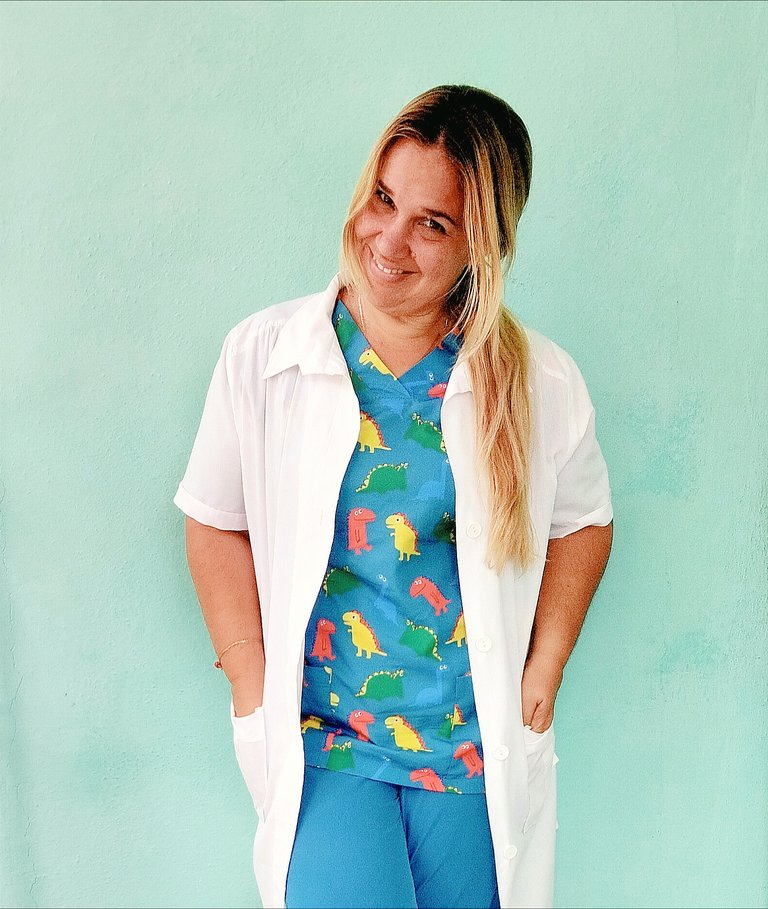
Los padres siempre intentan buscar una causa ante estas fobias, y comienzan a culparse, y me toca decirles que sí existe una predisposición en los niños con un temperamento más inhibido, pero también los niños son esponjas; si un padre o figura cercana muestra un miedo intenso hacia alguna cosa, el niño igual aprende que eso es peligroso, aunque no lo sea. Las experiencias traumáticas y la transmisión de información mediante películas, cuentos de terror, también pueden ser una especie de semilla para las fobias, en especial en mentes imaginativas como la de los infantes, que no saben diferenciar la fantasía de la realidad.
Ahora mismo podría contarles tantas y tantas anécdotas similares, casos en los que los miedos se agigantan tanto que son capaces de dañar las dinámicas familiares y el funcionamiento de las mismas, pero más importante que ello es siempre recordar que el cerebro tiene la maravillosa capacidad de la neuroplasticidad y reconfigura sus conexiones y aprende nuevas formas de responder. Siempre la medicación es el último y más desesperado recurso.
Las fobias de nuestros niños, la mayoría de las veces, aparecen como gritos de auxilio de un cerebro que aún está aprendiendo a regular la intensidad de sus emociones, y no son un defecto o un fallo en la crianza. Solo requieren de nosotros paciencia, comprensión y, cuando sea necesario, acudir a profesionales.
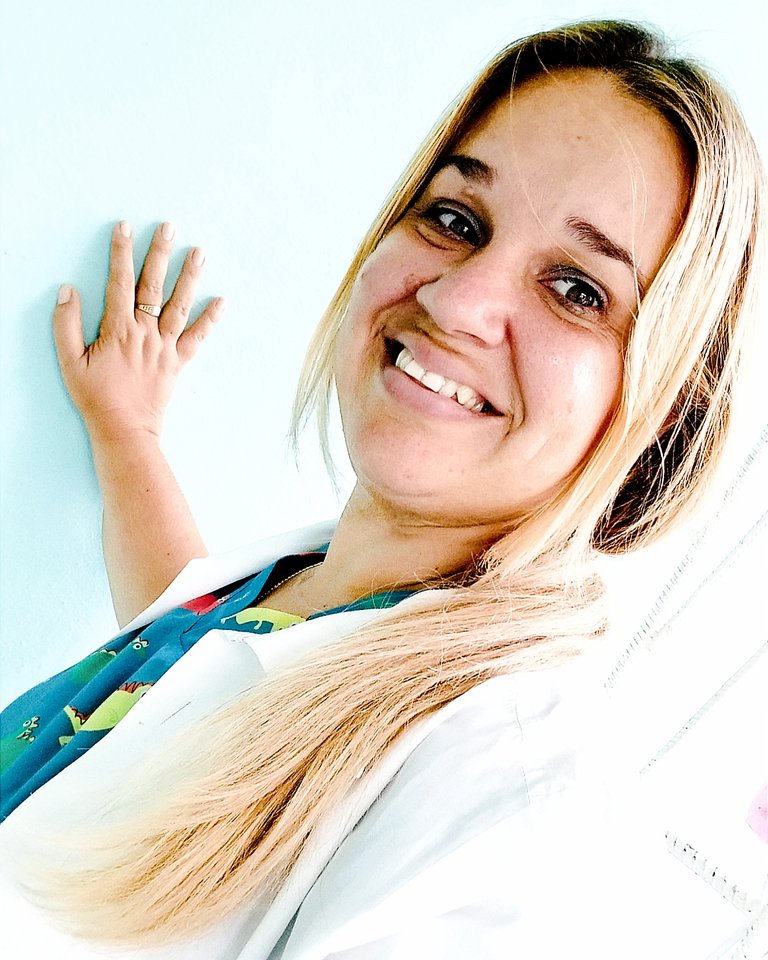
Yo, por mi parte, he decidido guardar por un tiempo mi conjunto de dinosaurios. Mi pequeñito paciente tiene un miedo irracional a los dinosaurios, pero yo les temo más a los niños llorando.

Acudo al llamado que nos ha hecho la amiga @charjaim, y destino una parte de las recompensas para @santamorillo, usuaria muy querida en esta comunidad y que en estos momentos pasa por un difícil momento.
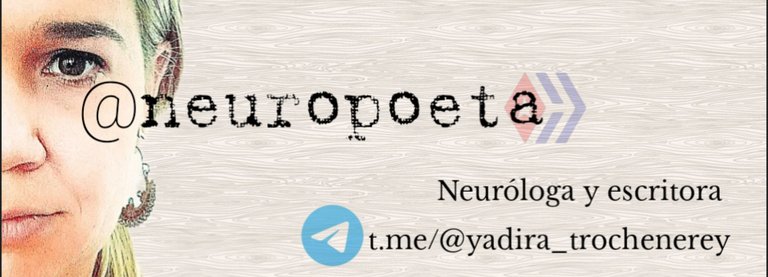
✳️¡𝑮𝒓𝒂𝒄𝒊𝒂𝒔 𝒑𝒐𝒓 𝒍𝒆𝒆𝒓! ✳️
𝑺𝒊 𝒂ú𝒏 𝒏𝒐 𝒎𝒆 𝒄𝒐𝒏𝒐𝒄𝒆𝒔: 𝒔𝒐𝒚 𝒏𝒆𝒖𝒓ó𝒍𝒐𝒈𝒂 𝒚 𝒆𝒔𝒄𝒓𝒊𝒕𝒐𝒓𝒂 𝒄𝒖𝒃𝒂𝒏𝒂, 𝒎𝒂𝒅𝒓𝒆, 𝒎𝒖𝒋𝒆𝒓 𝒚 𝒔𝒐ñ𝒂𝒅𝒐𝒓𝒂 𝒒𝒖𝒆 𝒆𝒏𝒄𝒐𝒏𝒕𝒓ó 𝒆𝒏 𝑯𝒊𝒗𝒆 𝒖𝒏 𝒉𝒆𝒓𝒎𝒐𝒔𝒐 𝒆𝒔𝒑𝒂𝒄𝒊𝒐 𝒑𝒂𝒓𝒂 𝒗𝒐𝒍𝒂𝒓.
𝑬𝒍 𝒕𝒆𝒙𝒕𝒐 𝒚 𝒍𝒂𝒔 𝒊𝒎á𝒈𝒆𝒏𝒆𝒔 𝒔𝒐𝒏 𝒅𝒆 𝒎𝒊 𝒂𝒖𝒕𝒐𝒓í𝒂, 100% 𝒉𝒖𝒎𝒂𝒏𝒐𝒔 (𝒔𝒊𝒏 𝑰𝑨).
𝑩𝒂𝒏𝒏𝒆𝒓 𝒅𝒊𝒔𝒆ñ𝒂𝒅𝒐 𝒑𝒐𝒓 𝑳𝒖𝒎𝒊𝒊.
¿𝑻𝒆 𝒈𝒖𝒔𝒕ó 𝒆𝒔𝒕𝒂 𝒑𝒖𝒃𝒍𝒊𝒄𝒂𝒄𝒊ó𝒏? 𝑽𝒐𝒕𝒂, 𝒄𝒐𝒎𝒆𝒏𝒕𝒂 𝒐 𝒓𝒆𝒃𝒍𝒐𝒈𝒖𝒆𝒂 𝒑𝒂𝒓𝒂 𝒂𝒚𝒖𝒅𝒂𝒓 𝒂 𝒅𝒆𝒔𝒑𝒍𝒆𝒈𝒂𝒓 𝒆𝒔𝒕𝒂𝒔 𝒂𝒍𝒂𝒔.💚

ENGLISH VERSION

Of Phobias and Dinosaurs
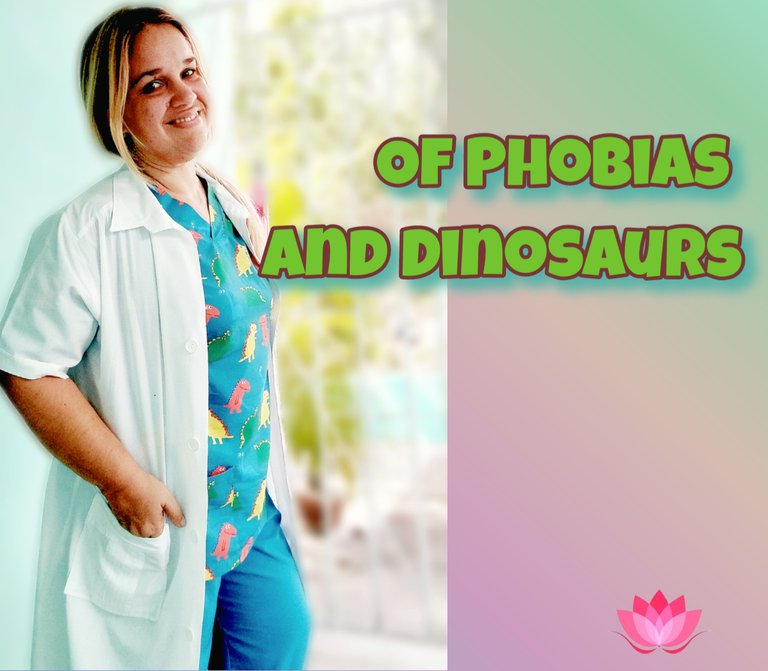
My closest friends and family know that Wednesdays are special days for me, difficult days when I must put them on the back burner because I need to focus completely on my work. Wednesdays, like yesterday, are my consultation days, which means I know when I arrive at the hospital but I don't know when I'll be able to leave. My consultations are lengthy due to the follow-up I owe my little patients, the new cases, and the need to have time to help parents understand concepts they need to grasp and to clarify concerns that are even difficult for me to explain.
And just yesterday, the universe placed a case in my hands that immediately reminded me of a topic that has been buzzing around this community lately and which I hadn't yet commented on: phobias.
On Wednesdays, because they are exhausting days, I always wear comfortable clothes, and this time I wore a simple outfit decorated with lots of little colorful dinosaurs. Needless to say, I adore that outfit, but the unexpected happened: my fourth little patient, as soon as he saw me, began to cry uncontrollably. I tell you, there was no way to console his crying. I even considered the possibility that he was in pain, like a severe headache or an earache, but my surprise was greater when his mother guessed that the little boy was extremely afraid of one of the dinosaurs printed on my scrubs. I finished that consultation with my white lab coat buttoned up so he couldn't see the drawings that scared him so much.

In my practice, it is very common for parents to arrive with worried faces and confess to me about the irrational panics their little ones have. Then, as a neurologist, the first thing I do is look for organic problems, and more than that, guide families to understand how a child's brain processes fear.
It's worth clarifying that it is crucial to differentiate between fear and phobias. Fear is an emotion that appears as an adaptation and is most of the time necessary; it functions as an alarm system we have created to ensure the survival of the species. Phobias, on the other hand, are no longer that brilliant and necessary alarm system, but rather a disproportionate, intense, and even irrational reaction to a stimulus that does not represent a real danger, which is exactly what happened to my little patient with my dinosaurs.

Parents always try to find a cause for these phobias and start to blame themselves. I have to tell them that there is a predisposition in children with a more inhibited temperament, but children are also sponges; if a parent or close figure shows an intense fear of something, the child learns that it is dangerous, even if it's not. Traumatic experiences and the transmission of information through movies, horror stories, can also be a kind of seed for phobias, especially in imaginative minds like those of infants who don't know how to differentiate fantasy from reality.
Right now I could tell you so many similar anecdotes, cases where fears grow so large that they are capable of damaging family dynamics and their functioning, but more important than that is to always remember that the brain has the wonderful capacity of neuroplasticity and reconfigures its connections and learns new ways to respond. Medication is always the last and most desperate resource.
Our children's phobias, most of the time, appear as cries for help from a brain that is still learning to regulate the intensity of its emotions, and they are not a defect or a failure in parenting. They only require from us patience, understanding, and, when necessary, turning to professionals.

For my part, I have decided to put away my dinosaur outfit for a while. My little patient has an irrational fear of dinosaurs, but I am more afraid of a crying child.

I am answering the call made by our friend @charjaim and allocating a portion of the rewards to @santamorillo, a much-loved user in this community who is currently going through a difficult time.
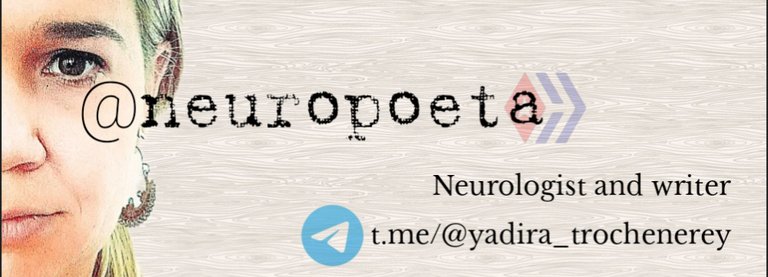
✳️𝑻𝒉𝒂𝒏𝒌𝒔 𝒇𝒐𝒓 𝒓𝒆𝒂𝒅𝒊𝒏𝒈! ✳️
𝑰𝒇 𝒚𝒐𝒖 𝒅𝒐𝒏’𝒕 𝒌𝒏𝒐𝒘 𝒎𝒆 𝒚𝒆𝒕. 𝑰’𝒎 𝒂 𝑪𝒖𝒃𝒂𝒏 𝒏𝒆𝒖𝒓𝒐𝒍𝒐𝒈𝒊𝒔𝒕 𝒂𝒏𝒅 𝒘𝒓𝒊𝒕𝒆𝒓, 𝒂 𝒎𝒐𝒕𝒉𝒆𝒓, 𝒂 𝒘𝒐𝒎𝒂𝒏, 𝒂𝒏𝒅 𝒂 𝒅𝒓𝒆𝒂𝒎𝒆𝒓 𝒘𝒉𝒐’𝒔 𝒇𝒐𝒖𝒏𝒅 𝒊𝒏 𝑯𝒊𝒗𝒆 𝒂 𝒃𝒆𝒂𝒖𝒕𝒊𝒇𝒖𝒍 𝒔𝒑𝒂𝒄𝒆 𝒕𝒐 𝒔𝒐𝒂𝒓.
𝑨𝒍𝒍 𝒕𝒆𝒙𝒕 𝒂𝒏𝒅 𝒊𝒎𝒂𝒈𝒆𝒔 𝒂𝒓𝒆 𝒎𝒚 𝒐𝒓𝒊𝒈𝒊𝒏𝒂𝒍 𝒄𝒓𝒆𝒂𝒕𝒊𝒐𝒏𝒔, 100% 𝒉𝒖𝒎𝒂𝒏-𝒎𝒂𝒅𝒆 (𝒏𝒐 𝑨𝑰).
𝑩𝒂𝒏𝒏𝒆𝒓 𝒅𝒆𝒔𝒊𝒈𝒏𝒆𝒅 𝒃𝒚 𝑳𝒖𝒎𝒊𝒊.
𝑳𝒐𝒗𝒆𝒅 𝒕𝒉𝒊𝒔 𝒑𝒐𝒔𝒕? 𝑼𝒑𝒗𝒐𝒕𝒆, 𝒄𝒐𝒎𝒎𝒆𝒏𝒕, 𝒐𝒓 𝒓𝒆𝒃𝒍𝒐𝒈 𝒕𝒐 𝒔𝒑𝒓𝒆𝒂𝒅 𝒕𝒉𝒆 𝒘𝒊𝒏𝒈𝒔 𝒐𝒇 𝒄𝒓𝒆𝒂𝒕𝒊𝒗𝒊𝒕𝒚! 💚
You received an upvote ecency
Congratulations @neuropoeta! You have completed the following achievement on the Hive blockchain And have been rewarded with New badge(s)
Your next target is to reach 2250 replies.
You can view your badges on your board and compare yourself to others in the Ranking
If you no longer want to receive notifications, reply to this comment with the word
STOPHola @neuropoeta, te imagine pensando en las miles de posibilidades de saber que le molestaba al príncipe que atendías, ni por la mente el dinosaurio y esos que los de tu bata son lindos.
Me contento leerte.
Estar en contacto con los niños, no te permite perder la capacidad del asombro y puedes todos los días redescubrir cosas nuevas y fascinantes. Yo me agoto los días de consulta, pero llego a casa con tantas anécdotas y mi hija me espera ansiosa para escuchar las maravillas que hacen mis pequeños pacientes.
Mi abrazo y gracias siempre por leerme.
!LADY
Saludos amiga gracias por ese aporte.
En cuanto al conjunto de dinosaurio se ve muy lindo, algunos niños sienten miedo por ellos y otros los adoran como es el caso de mi nieto el los coleccionaba y luego los perdía.
Agradecida infinitamente por tu apoyo.